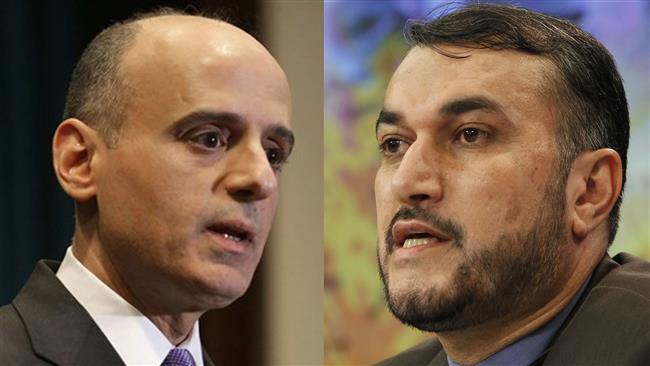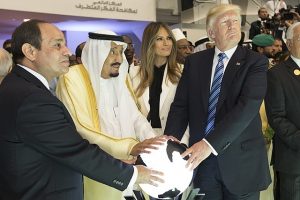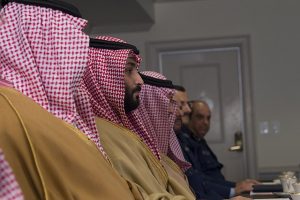by Jean-François Seznec and Samer Mosis
Saudi Arabia and the other OPEC members have made it abundantly clear that their priority is to aggressively defend market share, not stabilize global crude prices. Consequently, prices are low at the pump and American shale oil production has declined somewhat. However, developments in shale technology have rapidly rendered American dependence on Middle East oil a thing of the past, effectively diminishing US interests in the Gulf. Unnervingly for Gulf leadership, this is occurring when wars in Syria, Iraq, and Yemen are increasing the Gulf States’ need for American military support. Yet, Saudi Arabia and its Arab neighbors’ calls for support will merely be met with suggestions to develop their own military and political capacities, set aside regional vendettas, and attempt to build bridges with Iran.
US foreign policy in the Persian Gulf has primarily been guided by the need to guarantee the free and secure flow of hydrocarbons. This interest steadily grew in importance starting in 1986 as US oil production started to decline and imports increased steadily, reaching 10.1 million barrels per day (bpd) in 2005, nearly 50 percent of total US oil demand.
For the past few years, however, US shale oil producers have developed new and advanced technologies to help increase US crude oil production from 5 million bpd in 2007 to 9.6 million bpd in June 2015. This boost steadily reduced the US’s need to import crude oil and petroleum products, which fell from a combined total of 13.7 million bpd in 2006 to just above 9 million bpd today, and less than 5 million bpd when netting out exports of products.
With ongoing technological advancements allowing US shale oil wells to ramp up production rapidly and at diminishing costs, it is likely that the Saudi determination to undercut high cost producers is targeted more toward Russia than toward US producers. Furthermore, modest increases in Iranian and Iraqi crude productions will likely match any decline in US shale production in the near future. Thus, unless there is an arrangement between high-production-capacity states like Russia and Saudi Arabia to cut production substantially, prices will remain low. If prices do increase, US shale producers will return to the market very rapidly. If prices remain low, the US will be less dependent on any one source of hydrocarbons. Hence, in all scenarios, the declining US strategic interest in imported Middle East could prove unpleasant for Saudi and its neighbors.
American Disengagement from the Gulf
Starting in the 1980s, the US military presence in the Gulf has grown increasingly robust. This increase in military presence was of course in great part due to the US perception that it must protect oil-producing regions and export routes. However, local Arab States who feared both Iraqi bellicosity and Iranian revolutionary spillover also encouraged the growing US presence in the Gulf. Faced with these existential threats, the Gulf Arab states did not find it necessary to develop a sharp and efficient military structure, but instead viewed the US as their guarantor. Accordingly, Saudi Arabia and their Arab neighbors spent grand sums of money on expansive armament systems and extensive training contracts that rarely translated into effective domestic military capabilities. In short, the Gulf militaries were not built to be strong, efficient, independent institutions. Instead they served primarily as avenues for various princely clans to show off. In fact, this dichotomy was intentional in order to limit the likelihood of military coups, such as those that have afflicted regimes in Syria, Iraq, and Egypt.
Although the Gulf’s dependence on the US forces to face regional instability has continued to grow, strong domestic oil production has given the US a significant incentive to look beyond the region and toward the Asia-Pacific. Even more unnerving for the Gulf states, these developments come on the back of thawing American-Iranian relations and amidst widespread fatigue for interventions in the Middle East.
Of course, given the importance of the Strait of Hormuz to the global economy, the growing threat of non-state actors, and the geopolitical significance of military bases in Qatar, Bahrain, and Kuwait, the US will not likely forget its Gulf allies. Instead, as America’s dependence on foreign energy diminishes, Washington will grow unwilling to carry the burden of ensuring security and stability across the Arabian Peninsula and even more unwilling to act militarily on behalf of Saudi Arabia in places like Syria or Yemen. In other words, the strategic value of the US spending lives and treasure to secure energy flows that benefit Japan, South Korea, and even China becomes questionable.
Instead, the US is likely to push the cost of protecting the sea lanes, as well as solving regional issues, onto the shoulders of the region’s own leaders and budgets. In effect, the US will decrease their own military engagement while pushing the Gulf States to build their own capabilities, fight their own battles, and if possible mend fences with regional competitors like Iran.
Unimpressive Militaries
Indeed, American unwillingness to commit significant ground forces in Syria or Iraq and Washington’s repeated calls for a joint Arab force highlight the possibility that soon, the Gulf Arab states may find themselves without real defenses. As the conflict in Yemen has shown, despite over $700 billion in defense spending in the past 10-15 years, Saudi Arabia’s military capabilities are unimpressive. Bahrain, Kuwait, and Qatar do not fare much better. This leaves the Gulf States with three options: build their own strong defenses aimed at Iran, negotiate with Iran, or both. If the intractability of the Syrian conflict and the slow start to Saudi Arabia’s Islamic Anti-Terror Coalition are any indicators of Arab military prowess, leaders in Riyadh may still come to the conclusion that their interests are best served diplomatically, not militarily. In this sense, rapprochement with Iran would not only be advantageous but necessary, given Washington’s increasing unwillingness to send Americans to die for Saudi Arabia—a policy option that is further complicated by scalding press about the Kingdom’s human rights abuses, and the extremist, anti-American, religious ideology present across influential parts of its society.
Admittedly, should Tehran and Riyadh start talking rather than posturing, it is unlikely that they could agree on all, or even most, issues. The difficulties in establishing a dialogue are not made any easier by Saudi Arabia’s recent execution of dissident Shi’a Sheikh Nimr al-Nimr, the ongoing trial of prominent Shi’a dissidents for sedition three years after their arrest, or the recent extensive Saudi-led military maneuvers on the Kingdom’s border with Syria. The Iranians, for their part, are also adding pressure by continuing or even increasing their interference in Lebanese affairs, maintaining their extensive military support for Syrian President Bashar al-Assad, supporting the Houthi rebellion in Yemen, and in general enflaming fears of a “Shi’a Crescent” encircling Saudi Arabia.
However, none of the problems mentioned has to preclude cooperation. In fact, it was only a few years after the catastrophic Hajj incident of 1987, when the Saudi embassy in Tehran was destroyed and diplomatic relations severed, that Iranian President Akbar Hashemi Rafsanjani and Saudi Foreign Minister Saud al-Faisal ushered in a period of historically positive relations. In this sense, there does exist space and willingness for cooperation on energy and geopolitical issues. As Iranian Deputy Foreign Minister Hossein Amir-Abdollahian told Saudi Foreign Minister Adel Al-Jubeir, Iran believes that both states “should engage in a constructive dialogue, to act according to their role in fighting terrorism and extremism to render a more secure and stable Middle East.” The significance of this statement is further highlighted by the financial burden that regional conflicts are putting on Tehran and Riyadh at a time of very low oil prices and enormous budget deficits. Most importantly, both states face a common existential threat in the Islamic State, which could be defeated more rapidly with Iranian-Saudi cooperation.
Thus, seeing that the US is increasingly questioning the strategic importance of the Gulf, Saudi Arabia, and its neighbors, the Gulf Arabs increasingly have to face their problems on their own. One can hope that the Gulf Arabs and Iran realize that the dangerously escalating tensions can prevent both parties from focusing on their common interests and their common enemies. Both need to, and can, solve their own issues without US interference. In other words, a clear view of the realities on the ground, unobstructed by the hope that the US can be both the Arabs’ ultimate savior and Iran’s ultimate enemy, should push both to build diplomatic bridges. However difficult to build, bridges will be less costly than wars with unknown consequences for regimes on both sides of the Arab-Persian Gulf.
Photo: Saudi Foreign Minister Adel Al-Jubeir and Iranian Deputy Foreign Minister Hossein Amir-Abdollahian
Jean-François Seznec is an adjunct professor at the School for Advanced International Studies at Johns Hopkins. Samer Mosis is a Gulf energy consultant for The Lafayette Group LLC and a master’s candidate at the School of Advanced International Studies at Johns Hopkins University.





